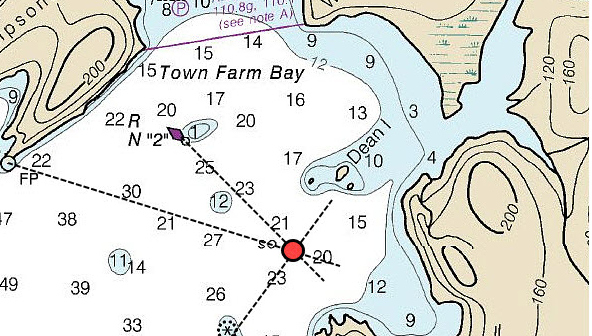So you’ve finally reached that dreamed-of cove or anchorage, you’ve dropped the hook, and you’re ready to relax. But is the anchor really set? Will it hold if the wind or current change? Will you have to get up in the middle of the night (we’ve all been there) to reset it at zero dark thirty?
The best thing to do before you call it a day and totally relax is to check to make sure the anchor is set and not dragging. Any anchor will drag at one time or another, and then it’s not fun. So once you’ve set the hook and given the boat a few minutes to settle down in relation to the wind and current, here are five tips from Skipper Tips about how to find out if your anchor is dragging:
1.Find two objects in a line – a range, or a transit – near shore. A piling, some trees, a flagpole. Record the bearing and your depth, and then check periodically.
2.Find a charted object or point of land. A flagpole off the beam, for example. Record the bearing. If you choose a buoy, remember that it may swing a bit.
3.Find an uncharted object on land. A tall tree, a mountain peak. Shoot the bearing off your beam with a handheld compass.
4.Take a radar range ahead or astern. Set the radar range to the lowest practical scale. Use the variable range marker to determine the range to an object ahead or astern of the boat.
5.Create a GPS proximity waypoint. Go to the proximity waypoint function on your chartplotter and create a “circle of protection” around your boat. If the boat drifts over the edge of the circle, an alarm will sound. Read more:
https://www.skippertips.com/public/2092.cfm




